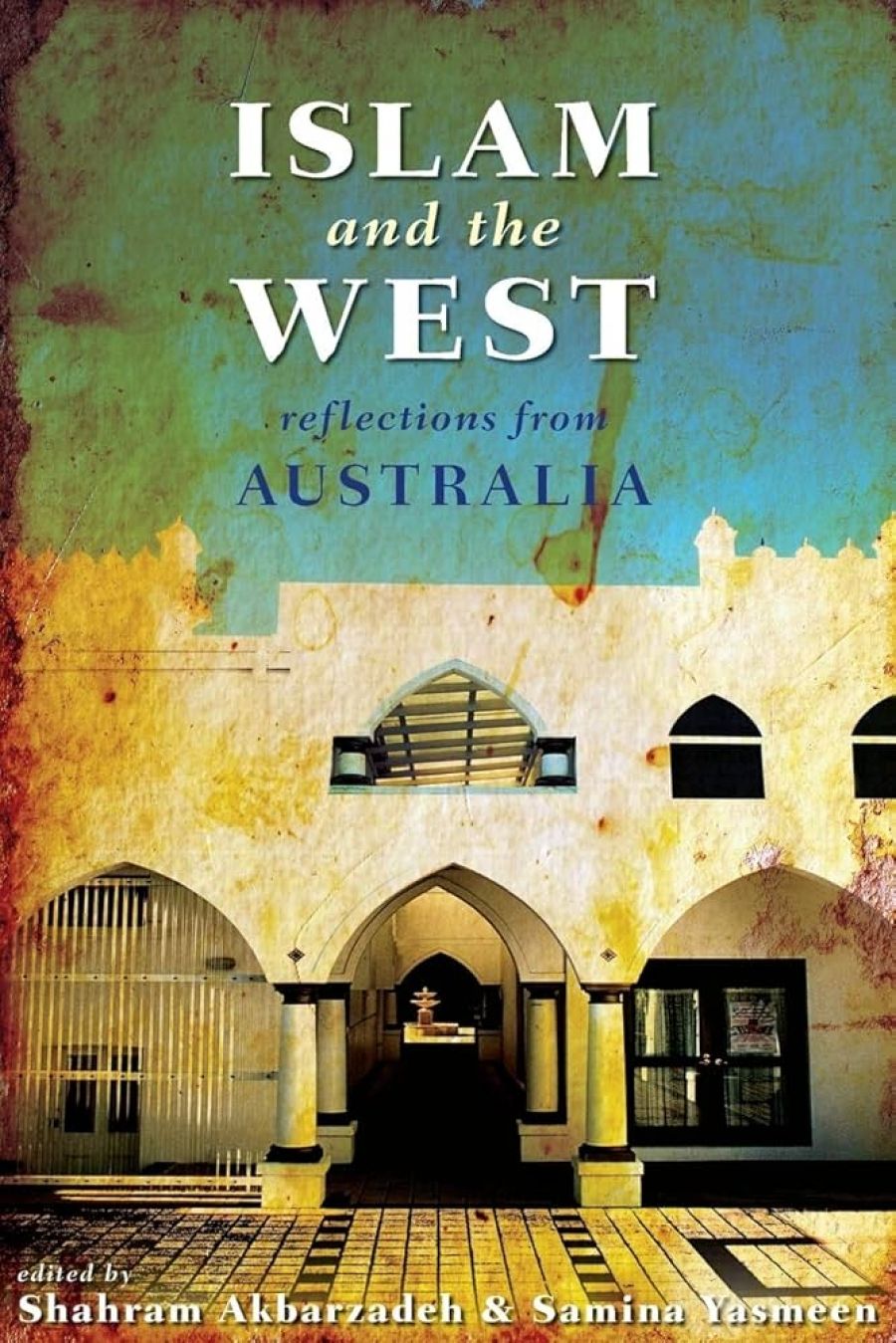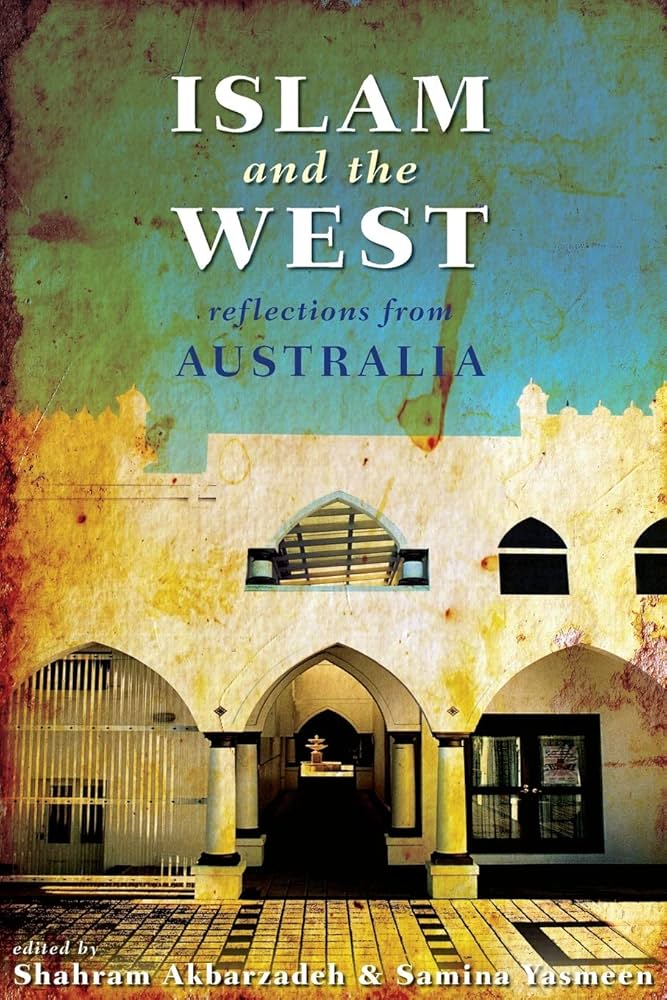
- Free Article: No
- Contents Category: Politics
- Review Article: Yes
- Article Title: Promoting understanding
- Online Only: No
- Custom Highlight Text:
The professed ‘clash of civilisations’, primarily between the West and Islam, makes an understanding among civilisations an imperative. Shahram Akbarzadeh has been promoting this understanding. In the past he has worked on Muslim Communities in Australia (2001) and Islam and Political Legitimacy (2003); this time his venture is with Samina Yasmeen. The UNSW Press has also been promoting interfaith understanding by publishing books such as this one.
- Book 1 Title: Islam and the West
- Book 1 Subtitle: Reflections from Australia
- Book 1 Biblio: UNSW Press, $34.95 pb, 186 pp
- Book 1 Cover Small (400 x 600):

- Book 1 Cover (800 x 1200):

Islam and the West presents analyses at three levels, following an introductory chapter by Akbarzadeh. Firstly, the ‘international context’, with chapters by Amin Saikal, Kylie Baxter, and Akbarzadeh, explores ‘the broad implications of the growing tension between the Muslim world and the West’. This tension is viewed ‘from a “Huntingtonesque” perspective’ even in the Muslim world because of Muslims’ overwhelming sense of unfair treatment resulting from ‘an international system that is skewed against them’. Secondly, the ‘regional level’, ‘an examination of south and southeast Asia’, has chapters by Yasmeen, Abdullah Saeed, William Maley, Osman Bakar and Greg Barton. The third level of analysis, from ‘the Australian national-perspective’, includes chapters by Michael Humphrey and Fethi Mansouri.
The book is a testament to self-examination. The authors look beyond petroleum politics to analyse Islam’s relationship with the West. Saikal, however, very succinctly, identifies a major issue related to the topic in just one sentence: ‘the main difference between Iraq and Afghanistan is that in the case of the latter the US supported the Jihadis as Islamic resistance fighters or Mujahideen, but in the case of the former it has branded them as terrorists.’
The ‘skewed’ system is also reflected in regional chapters. For example, analysing the activities of extremist organisations, the authors suggest that the demands (of Al Muhajiroun) that ‘would negate the urge for anyone to attack the US and the UK’ do not contain anything ‘about an ideologically based clash of Islam and kufr’. The problems relate to social, economic and political grievances.
Maley provides evidence that, since the ‘conflict’ has not been ideology-based, the problems have been contained within Islam. Thus, to lose sight of the fact that moderate Islamists have been among the most determined enemies of Islamist extremism in Afghanistan ‘is to lose sight of one of the most important realities of contemporary Afghan politics’. The contention is true for many other Muslim societies, such as Bangladesh and Pakistan where recently the extremists have gained ground by exploiting the grievances after being kept at bay, for the last fifty-odd years of their existence, by moderate military governments and liberal Muslim politicians.
The architects of the ‘war on terror’ also need to appreciate this fact. The chapter on ‘war on terror’, by Bakar, is important and timely. Islam expressly disallows taking one’s own life, the killing of innocent people, the destruction of property, or hatred to other human beings. The Koran declares, ‘Help ye one another in righteousness and piety, but help ye not one another in sin and rancour’. Since transgression is not righteous or acceptable, the terrorist activities cannot be justified. For Bakar, the problem is that the perpetrators are blinded by their personal ego and perhaps by frustration. Bakar, citing Anwar Ibrahim, emphasises the internal, as opposed to external, causes of Muslim terrorism, and highlights a ‘lack of political and social freedom, lack of Muslim participation in the global processes at the non-governmental levels and the failure of the Muslim world to address major international issues of the umma’.
A major claim in certain quarters has been that there is a relationship between terrorist activities and Islamic religious education. Saeed opines that Islamic religious education has been continuing for more than 1400 years without any record of producing terrorists. Further, none of the Muslim extremist groups, or their well-known leaders (including bin Laden and Zawahiri), named by the FBI, nor any of the September 11 hijackers, was educated in Islamic religious education institutions.
While the volume has been successful in highlighting some major analytical issues on the relationship of Islam with the West, it has some problems. It is insensitive to use terms such as ‘Islamic intrusion’ or ‘Arab raiders’ to discuss the history of a Muslim society (Afghanistan). Their use becomes even more unwarranted when the assertion does not stand critical historical examination because there was no ‘Arab raid’ in the area. The Samanids, having been converted to Islam, remained the rulers during the Abbasids, followed by the Ghaznavids (local slaves).
A few more footnotes to explain new terms such as Ahle Hadith and Deobandi tradition, naqshabandiya and Qadiriya would have been useful. The authors would have done a favour to the readers by citing the classical Islamic literature on some controversial issues. For example, Hijb al-Tahrir (an organisation ready to raise jihad) views the relationship between Islam and the West as one of unavoidable confrontation. Confrontation in the Koran comes only in the Medina passages, but even the Medina verses warn believers to stay away, for example, from hatred even against the perpetrators. Furthermore, ‘Hadith’ is defined as ‘just sayings of the Prophet’; in fact, it also includes his actions and his implicit or explicit consents, as reported by his companions. Poor referencing is also a drawback of the book: a significant example is the unsubstantiated claim that Jaish Muhammad used criminal networks for fund-raising and service delivery. Careful editing for expression would have made the book more pleasurable to read.


Comments powered by CComment